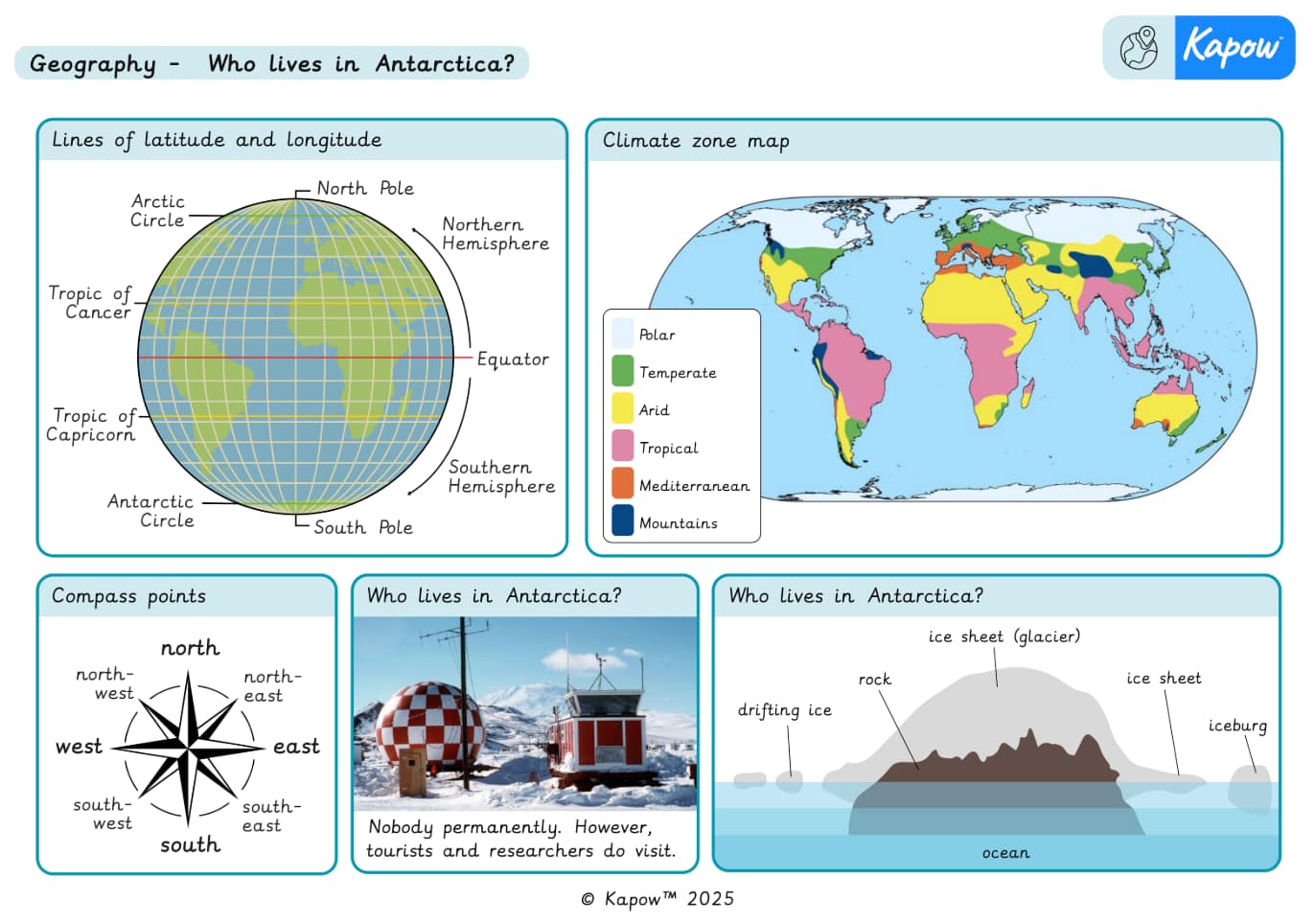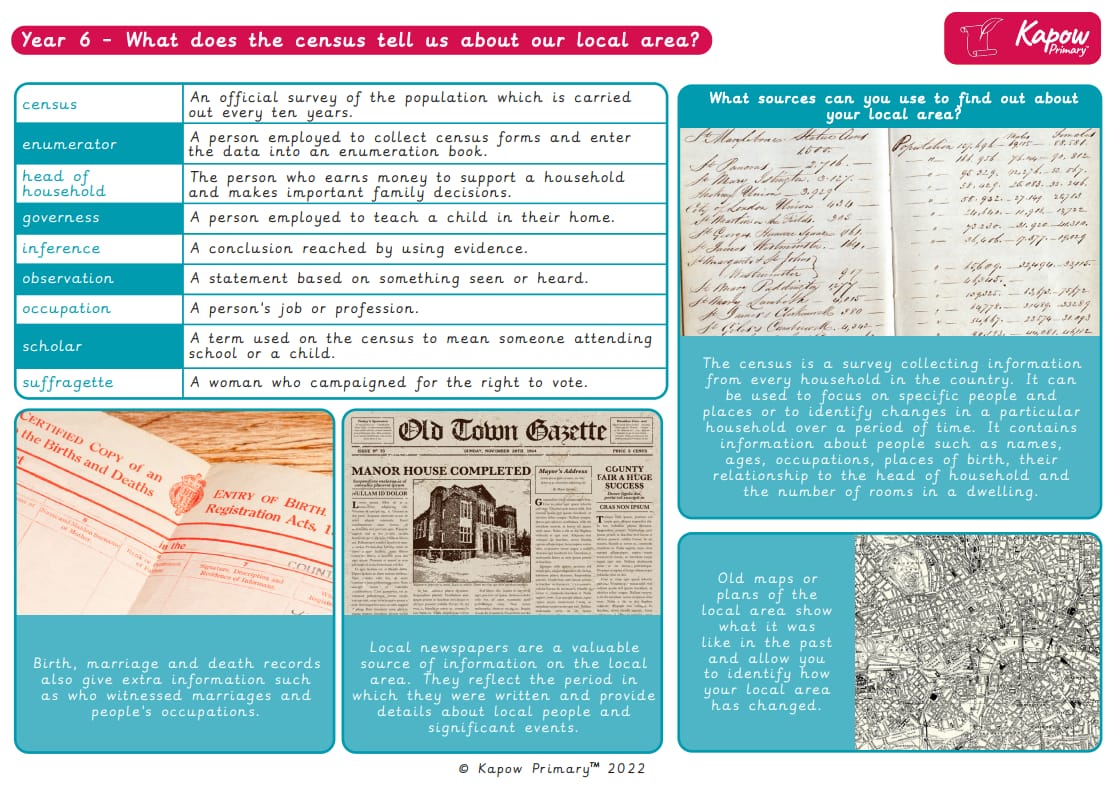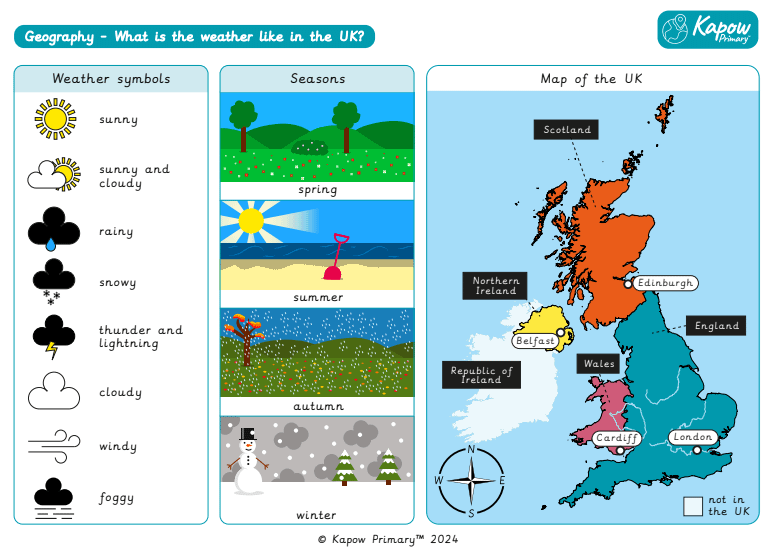
A Knowledge Organiser that captures the essential knowledge and skills learnt throughout the unit Geography, Year 1, What is the weather like in the UK?
This resource is designed to help children identify and describe different types of weather experienced across the United Kingdom. It introduces key weather symbols such as sunny, cloudy, rainy, snowy, and thunder and lightning, and links these to the four seasons: spring, summer, autumn, and winter. The map of the UK on the right-hand side helps pupils locate the countries and capital cities, including Scotland (Edinburgh), Northern Ireland (Belfast), Wales (Cardiff), and England (London). This unit supports early geographical understanding through visual cues and foundational vocabulary.
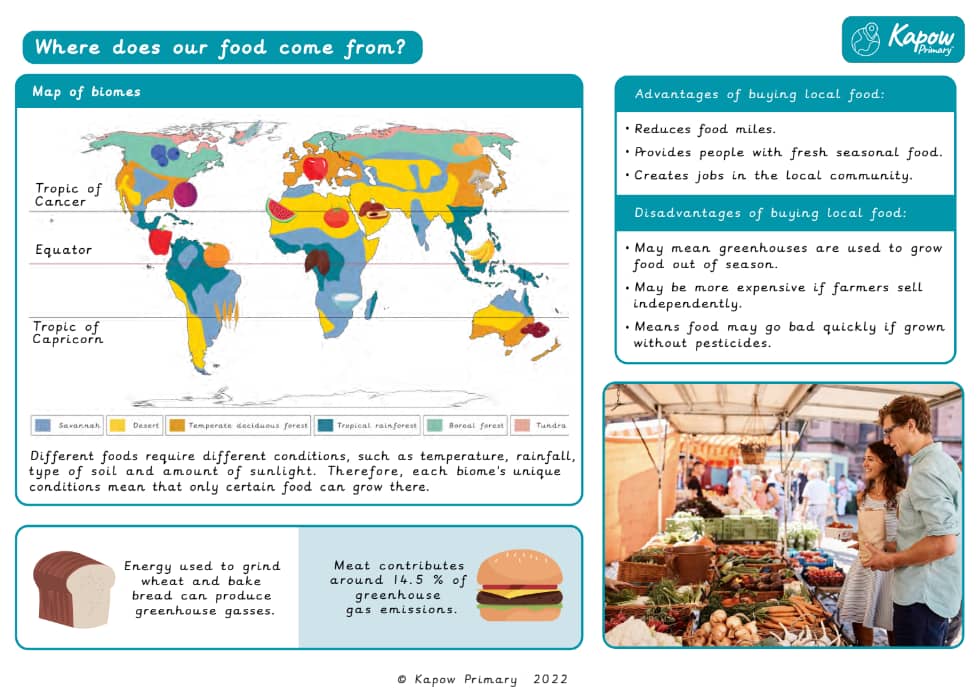
A Knowledge Organiser that captures the essential knowledge and skills learnt throughout the unit Geography, Year 4, Where does our food come from?
This resource is designed to help pupils explore the journey of food from its origin to their plate, with a focus on biomes, food miles, and sustainable trade. It explains how different foods require specific climates and conditions, introducing pupils to global biomes such as tropical rainforests and temperate deciduous forests. The unit explores the advantages and disadvantages of buying local versus imported food, including environmental impacts like greenhouse gas emissions and deforestation. It also unpacks key vocabulary such as import, trade, sustainability, and responsible trade, and highlights the benefits of ethical trading practices for farmers and communities worldwide. This unit promotes thoughtful discussion around food sourcing and encourages environmentally responsible choices.
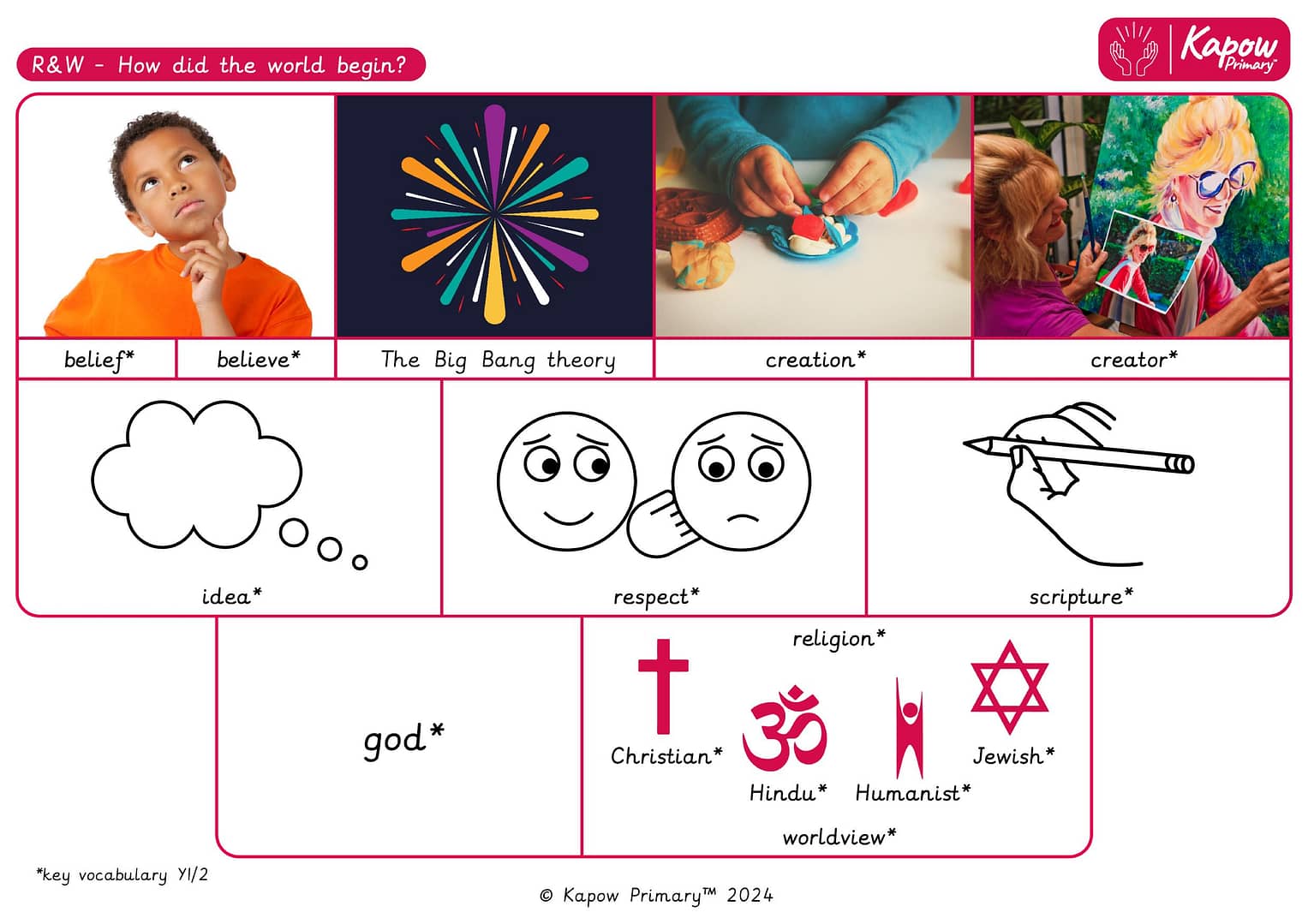
A Knowledge organiser that captures the essential knowledge and skills learnt throughout the unit Religion and Worldviews, Year 1, How Did the World Begin?
This Religion and Worldviews resource is designed to support the pupils as they explore different religious and cultural perspectives on the origins of the world. It introduces key vocabulary such as creation, belief, faith, myth, and tradition, helping the pupils understand how various worldviews explain the beginning of life. The pupils will also learn about creation stories from different religions and how these shape beliefs about the world and humanity.
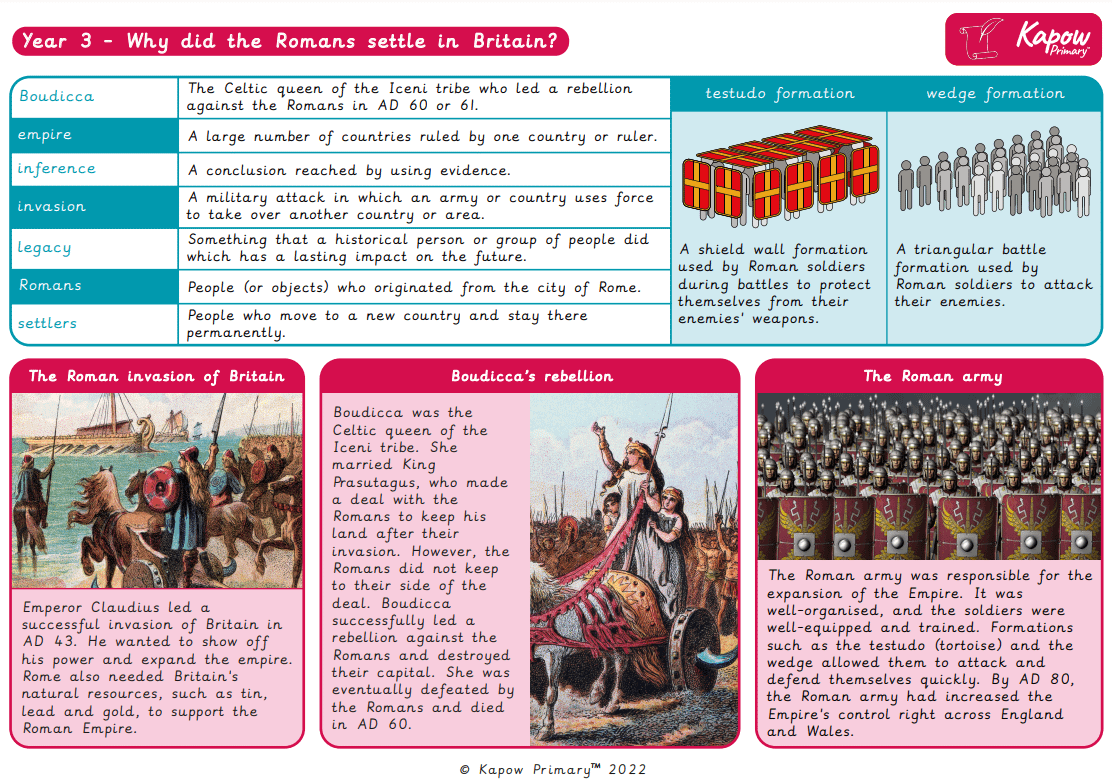
A Knowledge Organiser that captures the essential knowledge and skills learnt throughout the unit Archived – History, Year 3, Why did the Romans settle in Britain?
This resource is designed to support pupils as they explore the motivations and impact of the Roman invasion and settlement in Britain. It introduces key figures such as Emperor Claudius and Boudicca, while explaining the significance of military formations like the testudo and wedge. The organiser outlines the Roman army’s expansion, Britain’s valuable natural resources, and the long-lasting changes the Romans brought to British life. A visual timeline and key vocabulary provide accessible historical context and help pupils develop understanding of legacy, invasion and settlement.
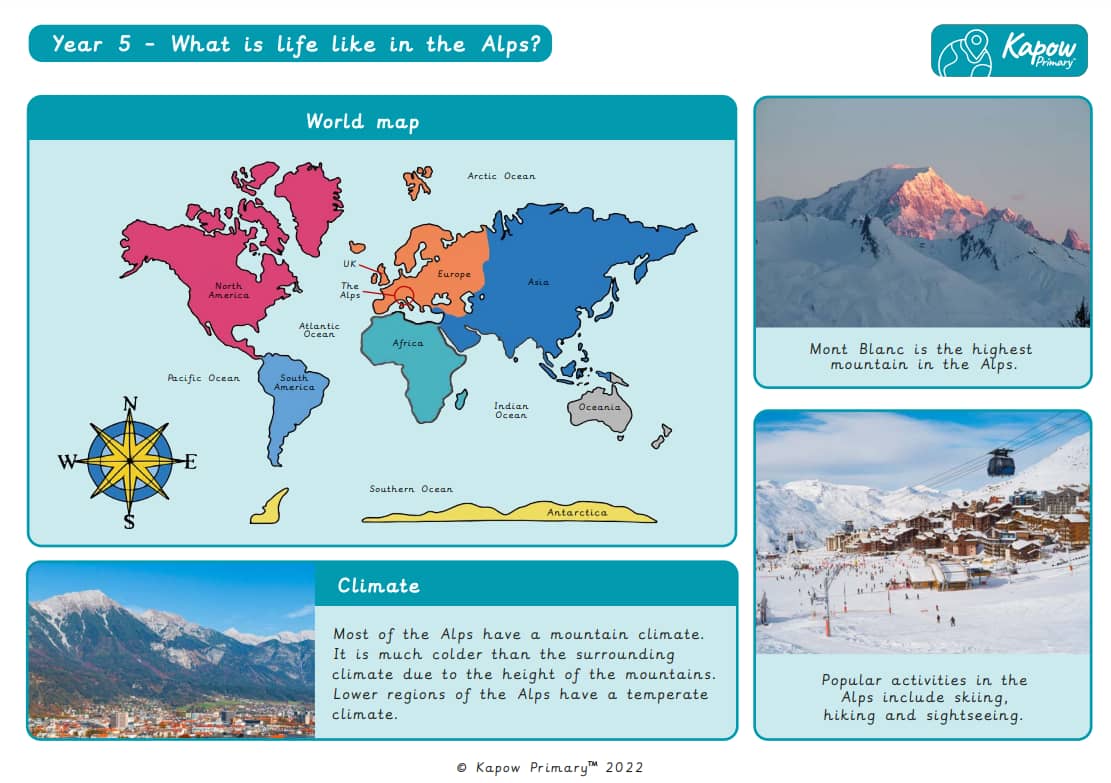
A Knowledge Organiser that captures the essential knowledge and skills learnt throughout the unit Geography, Year 5, What is life like in the Alps?
This resource is designed to support children as they explore the physical and human geography of the Alpine region. It highlights key vocabulary such as fold mountains, altitude, leisure, and tourist, while explaining how the Alps were formed and how their mountain climate varies with elevation. The unit introduces pupils to the concept of tourism in mountainous areas, examining activities like skiing and hiking, and encourages map skills by locating the Alps within Europe. It is ideal for developing locational knowledge and deepening geographical understanding through real-world contexts.
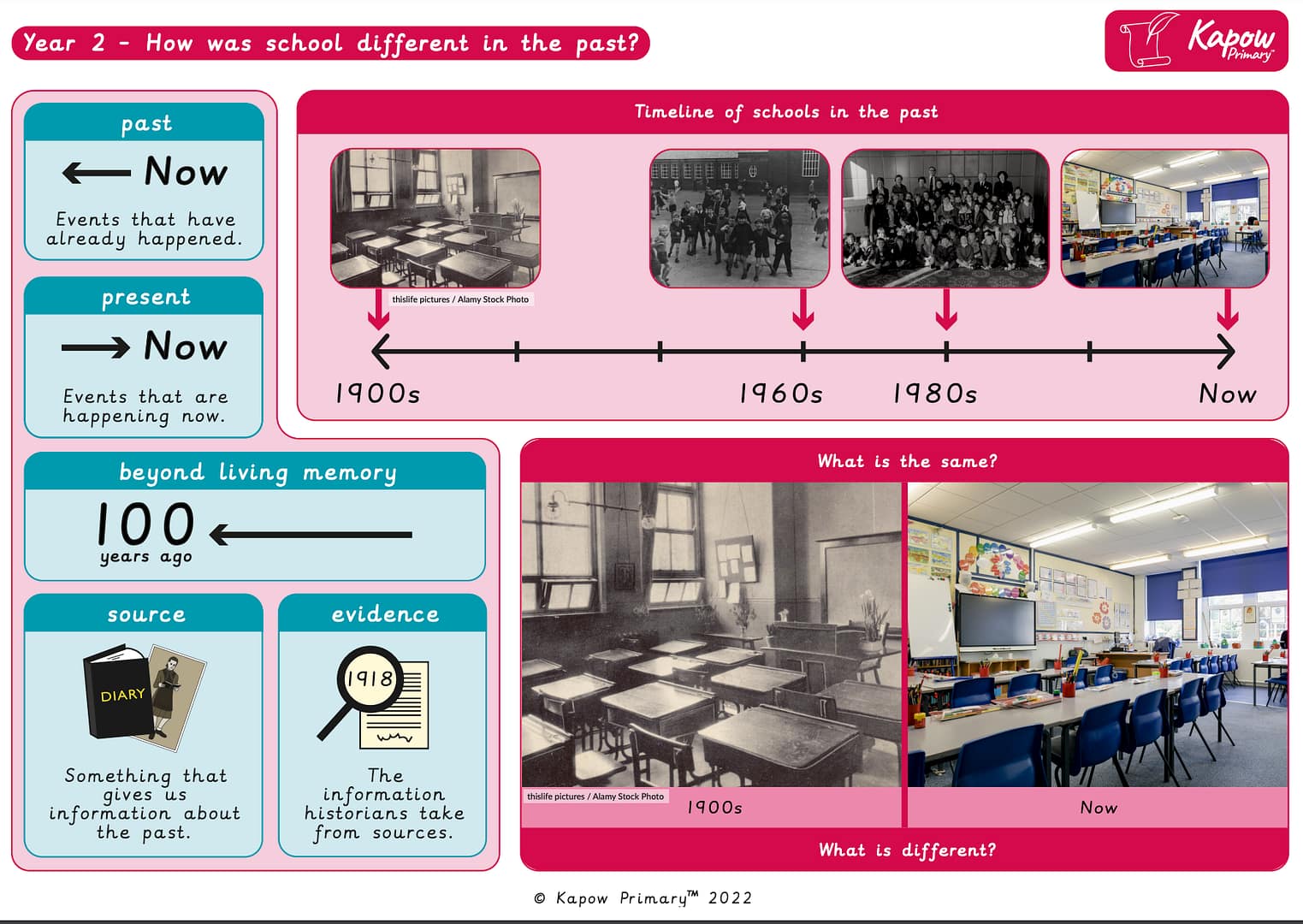
A Knowledge organiser that captures the essential knowledge and skills learnt throughout the History, Y2, How was school different in the past? unit.
This resource is designed to support children as they compare schools now and in the past. It highlights key vocabulary and helps develop a chronological understanding of ‘within living memory’ and ‘beyond living memory’.
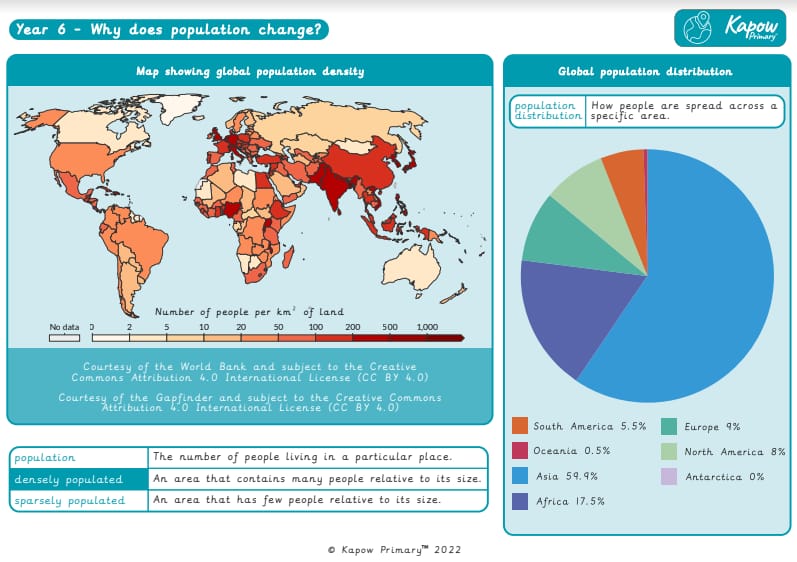
A Knowledge Organiser that captures the essential knowledge and skills learnt throughout the unit Geography, Year 6, Why does population change?
This resource is designed to support pupils as they explore the complex factors that influence population dynamics across the globe. It introduces vocabulary such as population, migration, birth rate, death rate, and refugee, while clarifying key concepts like population distribution, densely populated, and sparsely populated through visuals including a global map and pie chart on page 1. Page 2 provides structured comparisons of push and pull factors—highlighting economic, social, and environmental influences—as well as reasons for population growth and decline, including healthcare, conflict, job availability, and access to resources. The unit equips pupils with the knowledge to interpret global patterns and understand how migration and demographic change shape societies.





